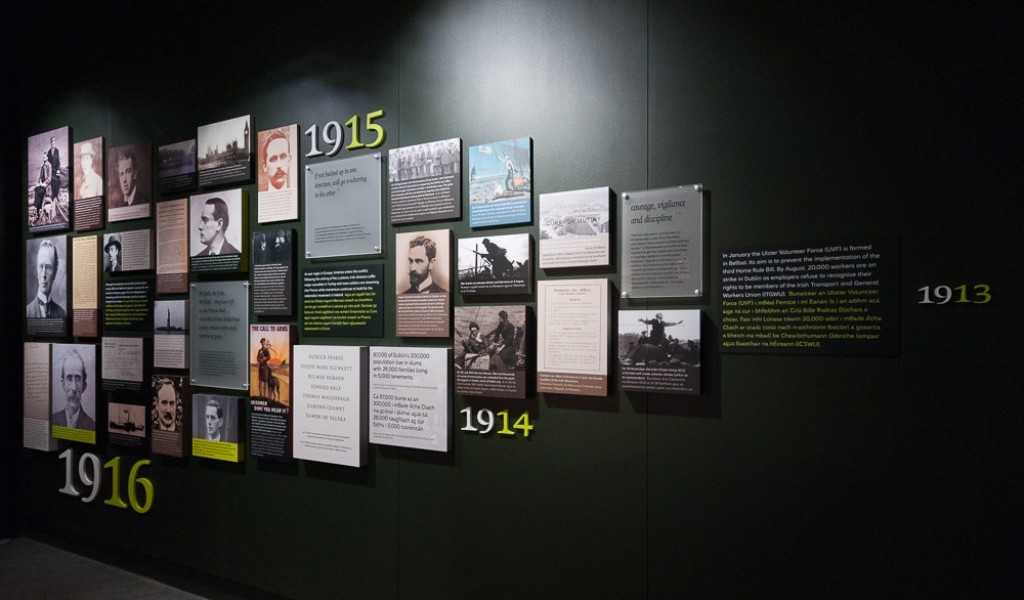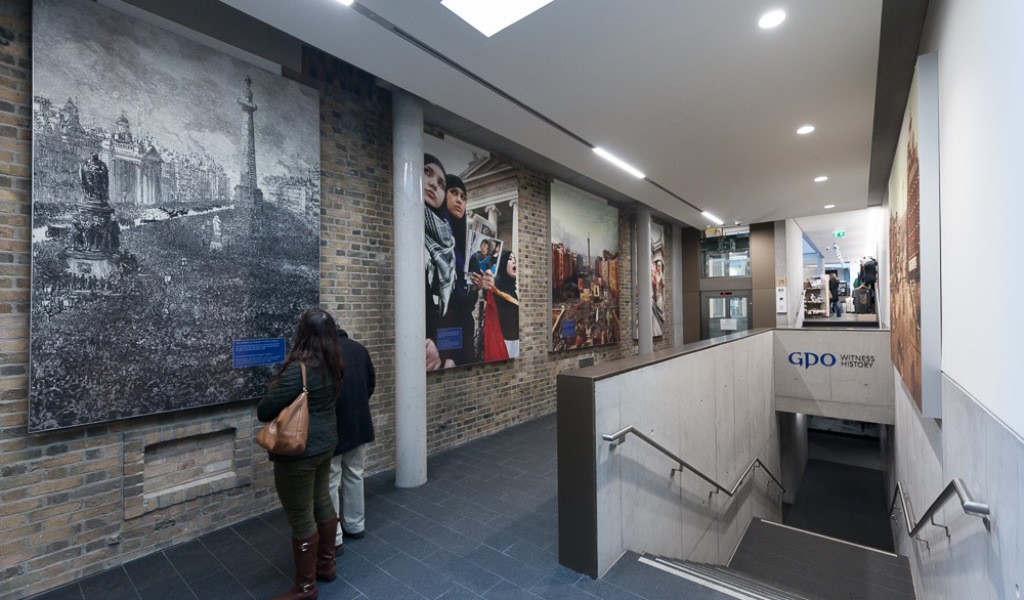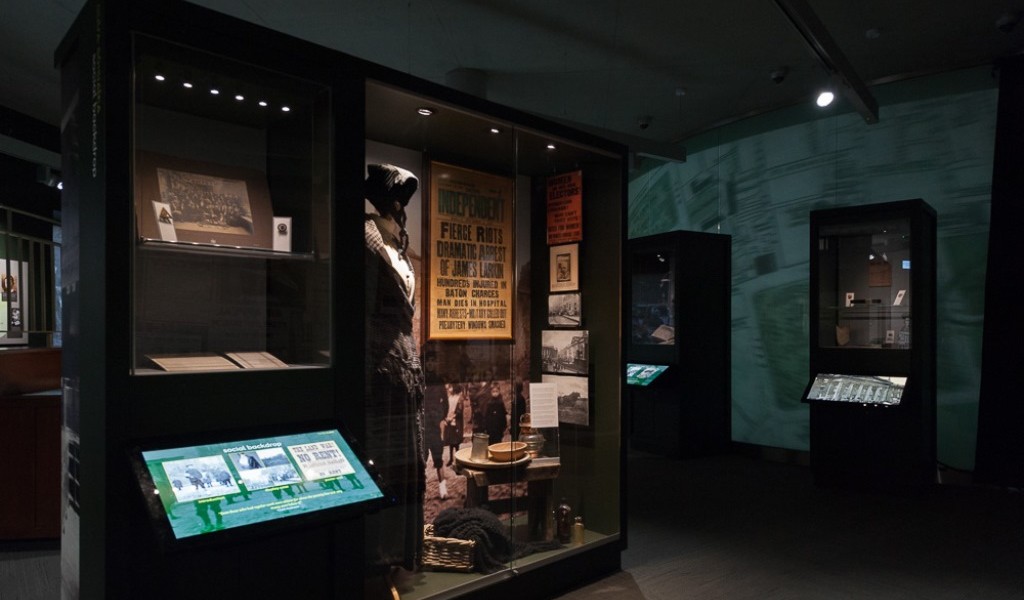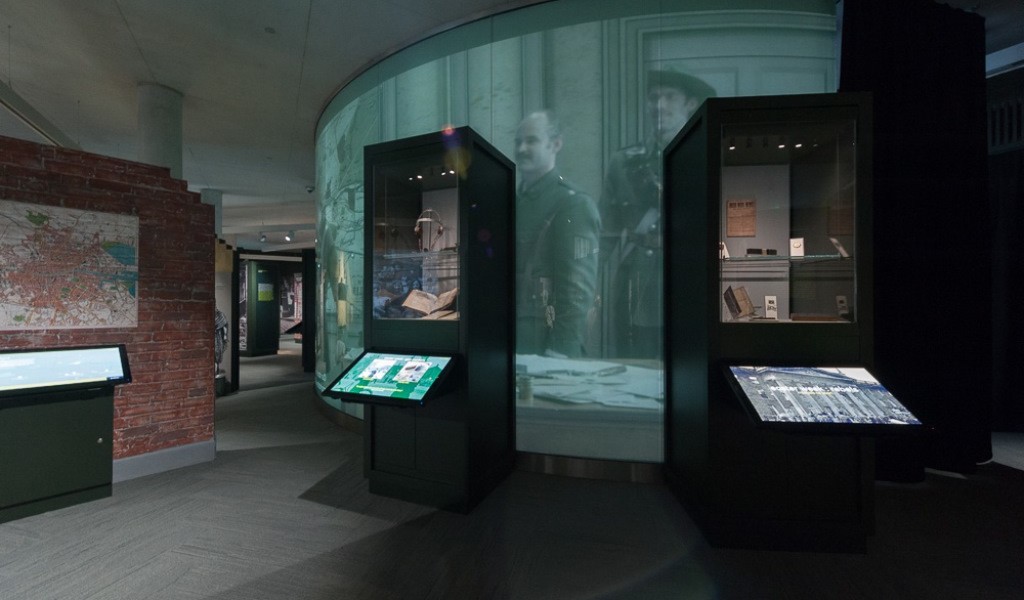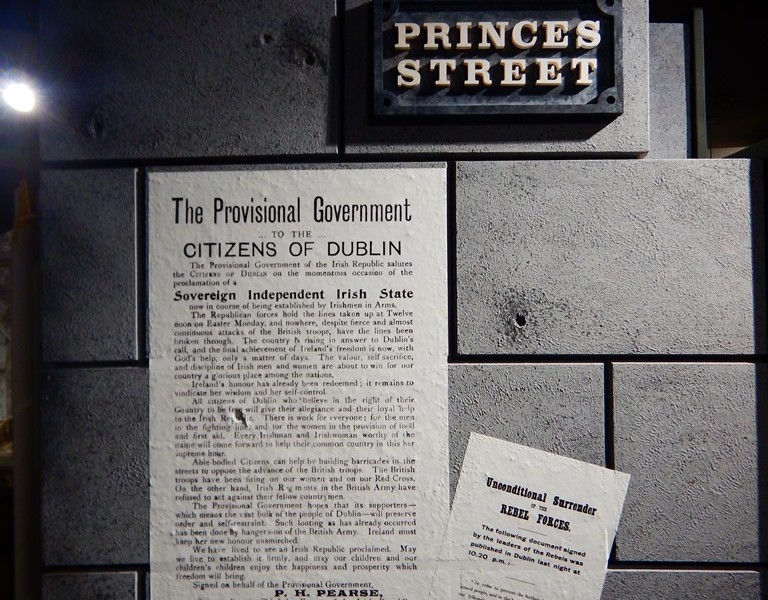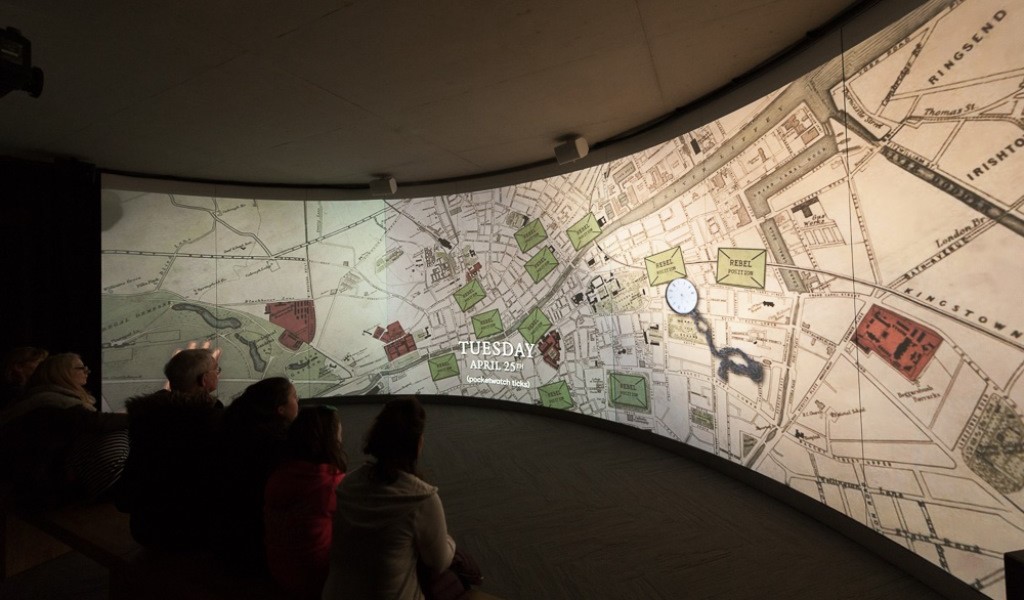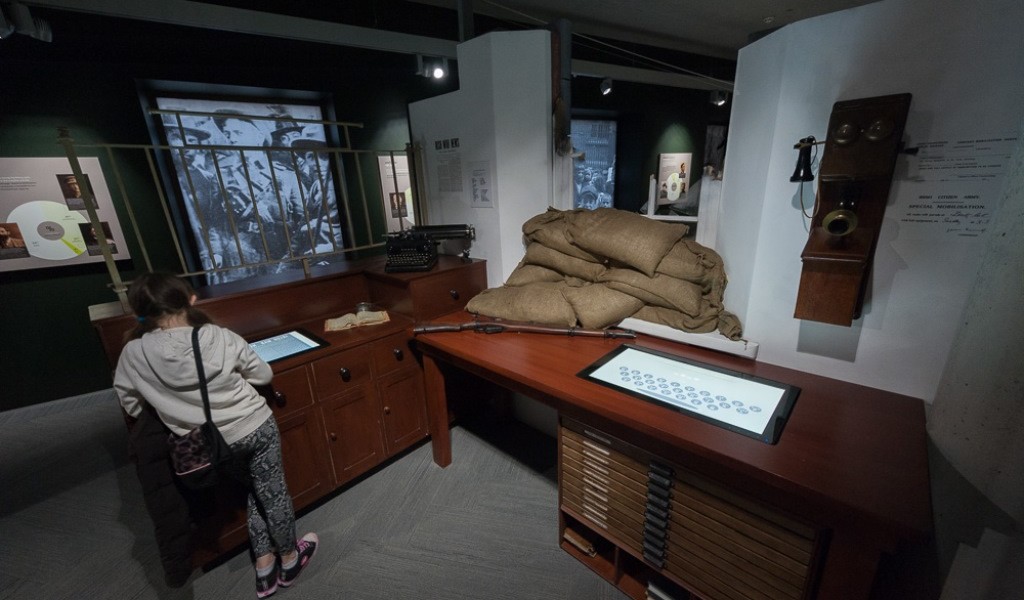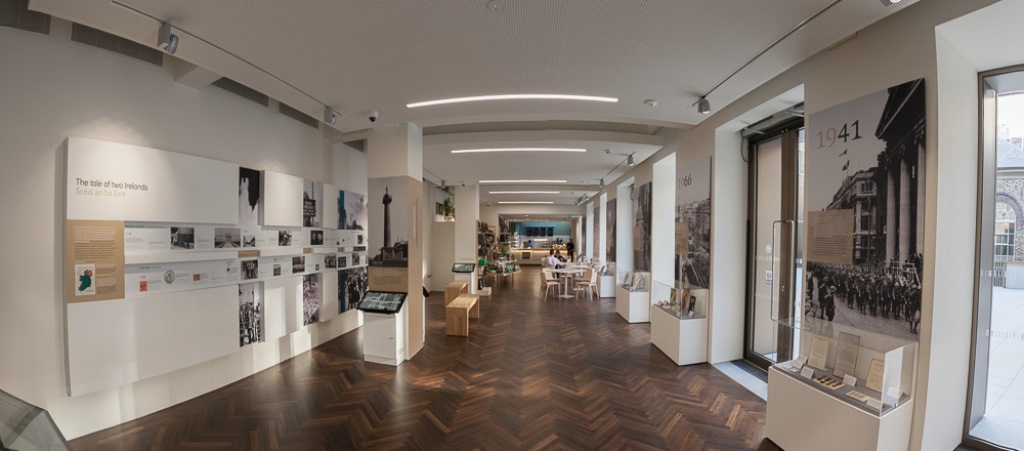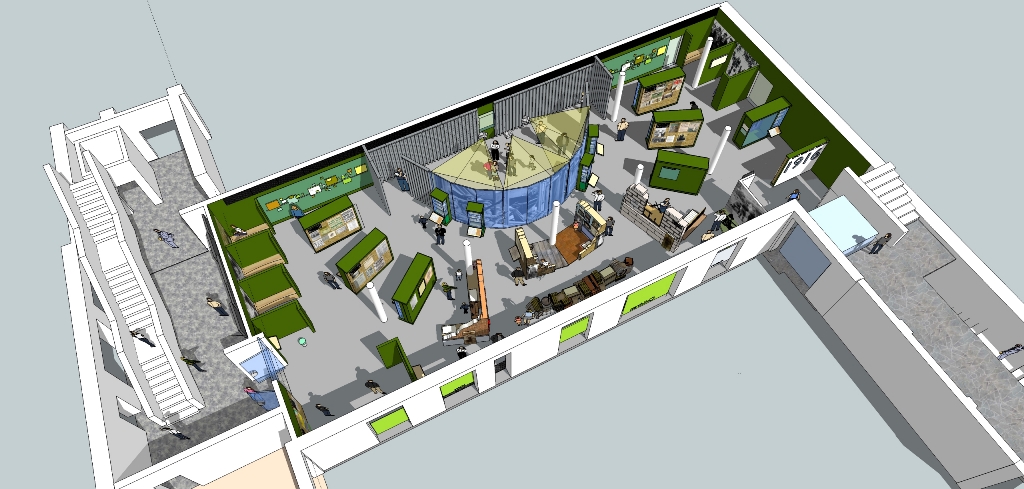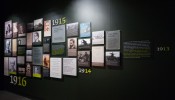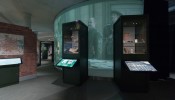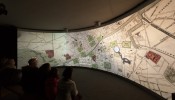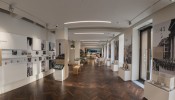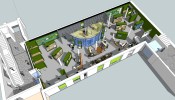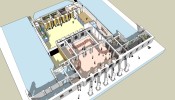The €6 million Witness History museum in the General Post Office in Dublin is a key part of Ireland’s ‘Decade of Commemorations’ – the centenary of the period in which Ireland won independence from Britain. Over the weekend a commemoration was held outside the GPO with tens of thousands of spectators crowding the streets of the Irish capital as events took place across the city.
The GPO Witness History museum chronicles the events from the Irish Cultural Revival of the late 19th century through the Home Rule Crisis to the Irish Civil War. It presents the 1916 Rising as the pivotal event of this period and explores its impact on the development of both states in Ireland.
‘The Rising made the GPO an iconic shrine of Irish statehood’ and the different ways in which the Rising has been celebrated at the GPO, reflects its contested legacy. It is projected to attract 300,000 visitors each year who on seeing Witness 1916 will be able to record and compare their views on past events, as well their aspirations for the next century of Irish freedom.
The museum has been designed and fitted-out by Martello Media, who are also behind Glasnevin Cemetery in Dublin one of the most popular visitor attractions in Ireland. Martello worked with An Post’s architects to develop a master plan in advance of the appointment of Shannon Heritage as the operators of Witness 1916.
“It was important to An Post that the GPO continued to be used for its postal purposes and also be the location of the museum – the building itself would be an attraction,” says Martello Media’s managing director Mark Leslie. “The GPO is like Speaker’s Corner and Times Square rolled into one – symbolically it is a piece of theatre and it was the only place to hold the revolt as it was also strategically important.”
Martello’s conceptual and thematic design provides a flexible and economically sustainable visitor experience, with appropriately sized and positioned spaces for ticketing, exhibition, audiovisual, educational, seminar, social, catering and retail activities.
Martello was also appointed to design and manage the installation the internal fit-out in a fixed price design/build contract. The remit included:- the graphic look-and-feel; display cases; information panels; dressed sets; audiovisual and multimedia installations; interactive software; video and written content.
A newly built staircase and lifts allow the ground floor and basement to be used for the exhibitions and a new restaurant and shop have been included in the visitor attraction.
Martello coordinated a panel of specialist researchers, archivists, and historians to assist and to edit the work of Martello’s Head of Content. Martello took the lead role in identifying and negotiating the loan and/or acquisition of a wide range of relevant historical artefacts, documents, replicas and facsimiles.
‘Witness 1916’ has six themed exhibition areas. The Orientation Gallery allows tour guides to present the global significance of the 1916 Rising. Pageant Parade and Protest highlights the status of the GPO as the focus of O’Connell Street, the capital’s ceremonial space. The Witness Revolution Gallery presents events in Ireland from 1890 to 1922.
“Ireland as a Republic is seen to have begun after the Declaration of Independence was posted on the GPO,” says Leslie. “The exhibition is a permanent commemoration to the events that happened, telling of the entire Home Rule crisis and looking at the story, with all its violence, and at The Troubles and the resulting Peace Process, which includes joint administrations for example tourism. Our exhibition allows people of all persuasions to make their own mind up.”
The museum’s special effects, soundscapes and heartfelt stories of real people in extraordinary circumstances aim to captivate all age-groups – from the curious, young international visitor to the well-informed history buff.
The centre piece of GPO Witness History is an immersive, semi-circular, 15-minute film which puts visitors right at the heart of events of Easter Week when the GPO was both the Rebels’ military command centre and the seat of the Provisional Irish Government.
GPO Witness History gives visitors a sense of what it was like to be in the GPO and Dublin during Easter 1916 and to reflect on how those days shaped Ireland over the following 100 years. While the exhibition is self-guided (using multi-lingual headsets), guided tours are also available to visitors. Having explored the immersive exhibition, visitors can take time to contemplate the place and its extraordinary stories in a unique original courtyard space, adjacent to the museum’s café and retail outlet.
This space also features a specially commissioned memorial to the 40 children killed by gunfire during Easter Week 1916. Entitled They are Of Us All, it was created by internationally renowned Dublin artist, Barbara Knezevic using polished steel and black limestone rocks which came from the ruins of Jacobs biscuit factory – each stone represents a child.
The Memorial Wall honours the participants. The Commemoration Gallery compares the development of two parallel states in Ireland, and the contested legacy of 1916. An external courtyard facilitates a rotation of artworks, and has a memorial garden to the children killed in the Rising. Both the Orientation Gallery and The Commemoration Gallery cater for a wide range of cultural, educational and social events, and temporary exhibits.


